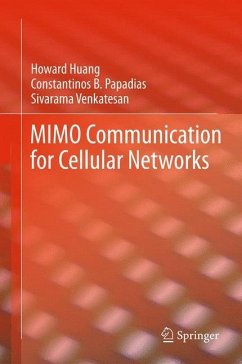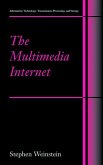This book explores the foundations of MIMO networks consisting of multiple simultaneous MIMO links, applying the principles to the design of next-generation wireless networks. Includes a systematic survey of MIMO systems, with an eye to networks of the future.
As the theoretical foundations of multiple-antenna techniques evolve and as these multiple-input multiple-output (MIMO) techniques become essential for providing high data rates in wireless systems, there is a growing need to understand the performance limits of MIMO in practical networks. To address this need, MIMO Communication for Cellular Networks presents a systematic description of MIMO technology classes and a framework for MIMO system design that takes into account the essential physical-layer features of practical cellular networks.
In contrast to works that focus on the theoretical performance of abstract MIMO channels, MIMO Communication for Cellular Networks emphasizes the practical performance of realistic MIMO systems. A unified set of system simulation results highlights relative performance gains of different MIMO techniques and provides insights into how best to use multiple antennas in cellular networks under various conditions.
MIMO Communication for Cellular Networks describes single-user, multiuser, network MIMO technologies and system-level aspects of cellular networks, including channel modeling, resource scheduling, interference mitigation, and simulation methodologies. The key concepts are presented with sufficient generality to be applied to a wide range of wireless systems, including those based on cellular standards such as LTE, LTE-Advanced, WiMAX, and WiMAX2. The book is intended for use by graduate students, researchers, and practicing engineers interested in the physical-layer design of state-of-the-art wireless systems.
As the theoretical foundations of multiple-antenna techniques evolve and as these multiple-input multiple-output (MIMO) techniques become essential for providing high data rates in wireless systems, there is a growing need to understand the performance limits of MIMO in practical networks. To address this need, MIMO Communication for Cellular Networks presents a systematic description of MIMO technology classes and a framework for MIMO system design that takes into account the essential physical-layer features of practical cellular networks.
In contrast to works that focus on the theoretical performance of abstract MIMO channels, MIMO Communication for Cellular Networks emphasizes the practical performance of realistic MIMO systems. A unified set of system simulation results highlights relative performance gains of different MIMO techniques and provides insights into how best to use multiple antennas in cellular networks under various conditions.
MIMO Communication for Cellular Networks describes single-user, multiuser, network MIMO technologies and system-level aspects of cellular networks, including channel modeling, resource scheduling, interference mitigation, and simulation methodologies. The key concepts are presented with sufficient generality to be applied to a wide range of wireless systems, including those based on cellular standards such as LTE, LTE-Advanced, WiMAX, and WiMAX2. The book is intended for use by graduate students, researchers, and practicing engineers interested in the physical-layer design of state-of-the-art wireless systems.








